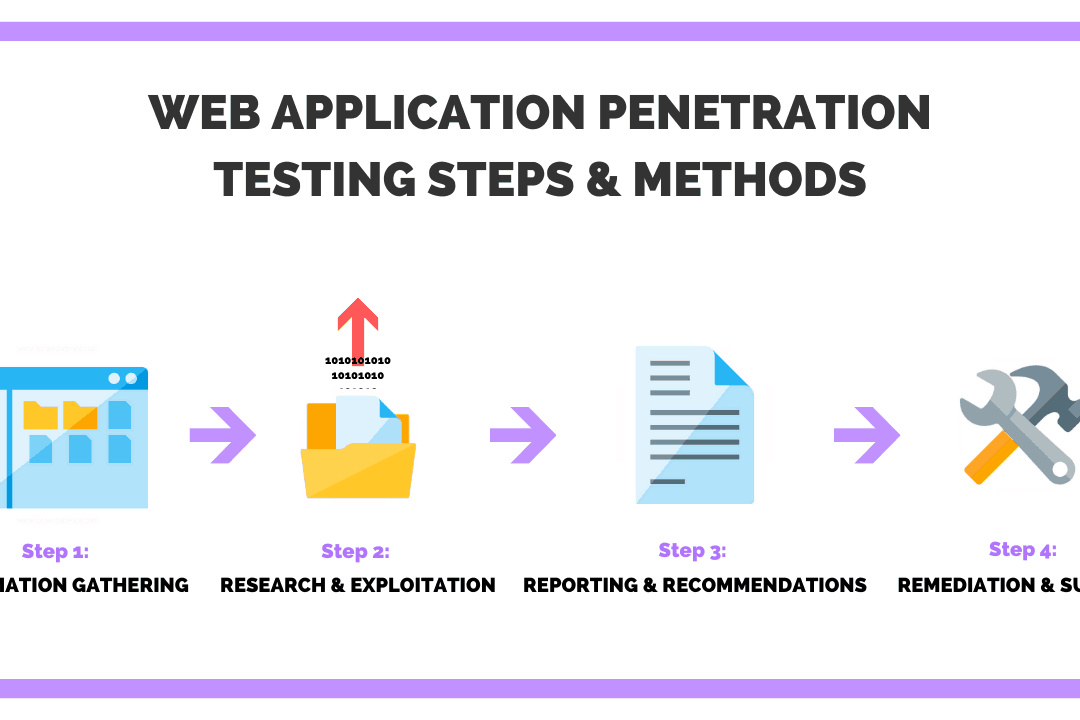Web application security has become a critical concern for businesses worldwide. As hackers continue to develop sophisticated techniques to exploit vulnerabilities, it’s essential to stay a step ahead. Conducting a Web Application Penetration Test allows businesses to simulate real-world attacks, identifying and addressing potential weaknesses before they can be exploited. In this article, we’ll explore the top 10 strategies to ensure your Web Application Penetration Test effectively strengthens your application’s security and resilience.
Web Application Penetration Test: Thorough Planning and Scoping
Every successful test begins with thorough planning and scoping. Establish clear objectives, analyze the application’s architecture, and identify critical components requiring detailed analysis. This focused approach saves time and resources, ensuring all high-risk areas are covered without diverting attention to unnecessary aspects.
Web Application Penetration Test: Authentication and Authorization Testing
Authentication and authorization controls are essential to safeguard user data and privacy. Rigorously testing login workflows, password policies, session management, and user roles can reveal issues like weak password storage or broken authentication mechanisms. Fixing these weaknesses protects sensitive data from unauthorized access.
eb Application Penetration Test: Input Validation and Sanitization
Input validation flaws remain a significant attack vector in web applications. Testing for input vulnerabilities involves injecting various data types to see how the application handles unexpected input. Identifying and addressing these issues helps protect the application from common attacks like SQL injection, cross-site scripting (XSS), and command injection.
Web Application Penetration Test: Session Management Security
Secure session management is crucial for maintaining user security and preventing unauthorized access. This includes testing for issues like session fixation, inadequate session expiration, and insecure session cookie transmission. Addressing session management vulnerabilities is essential for preventing session hijacking and unauthorized access.
Web Application Penetration Test: Secure Data Storage
Web applications frequently handle sensitive user information, making secure data storage essential. Testing for data storage vulnerabilities ensures that data is protected using strong encryption and secure storage methods. Implementing best practices around data handling can prevent breaches and help businesses meet regulatory standards.
Web Application Penetration Test: Business Logic Testing
Business logic vulnerabilities can lead to application misuse. This involves testing for flaws that allow users to bypass expected workflows or exploit application functions for unintended advantages. Testing for business logic weaknesses can enhance security and help ensure the application’s intended functionality.
Web Application Penetration Test: Access Control Assessment
Access control issues can expose sensitive resources and data. By testing access controls, you can verify that users are restricted to appropriate resources. This process involves checking user roles, permissions, and restrictions to confirm they are set up correctly, preventing unauthorized access.
Web Application Penetration Test: API and Third-Party Integration Security
APIs and third-party integrations are integral to many applications and require special attention. Examining APIs for authentication, rate limiting, and data validation issues helps ensure these integrations don’t compromise application security. A secure integration strategy reduces the risk of external threats impacting the application.
Web Application Penetration Test: Cross-Site Scripting and CSRF Protection
Cross-site scripting (XSS) and cross-site request forgery (CSRF) are two of the most common attacks targeting web applications. Testing for these vulnerabilities involves analyzing input fields for XSS weaknesses and ensuring CSRF tokens protect sensitive actions. Addressing these issues strengthens application security by safeguarding against attacks targeting user sessions.
Web Application Penetration Test: Continuous Monitoring and Post-Test Remediation
Security testing should not end with a single test. Regular monitoring and post-test remediation are crucial to maintaining application security. Implementing ongoing monitoring helps detect new threats as they arise, and regular retesting ensures that all identified vulnerabilities have been effectively resolved.
Conclusion
Conducting a Web Application Penetration Test is an essential step in securing your web applications against an evolving landscape of cyber threats. By following these top 10 strategies, you’ll be able to uncover critical vulnerabilities, strengthen your security posture, and protect sensitive data from potential attacks. Remember, web application security is an ongoing process that requires periodic assessments, updates, and proactive measures. Implementing these strategies will help you achieve maximum security and confidence in your web applications.
FAQs
Q1. What is the main purpose of a web application penetration test?
The primary goal of testing is to identify and remediate vulnerabilities by simulating real-world cyberattacks, improving overall security, and safeguarding sensitive data.
Q2. How often should a web application penetration test be performed?
Tests should ideally be conducted at least once a year or whenever significant changes are made to the application. Regular testing helps maintain security against evolving threats.
Q3. What tools are commonly used for testing?
Popular tools include Burp Suite, OWASP ZAP, Metasploit, and Acunetix. These tools are instrumental in identifying issues like SQL injection, XSS, and other common vulnerabilities.
Q4. What should be done after a penetration test?
After testing, it’s important to address all identified vulnerabilities, prioritize remediation based on severity, and conduct retesting. Ongoing monitoring can also help detect any new vulnerabilities.
Q5. Is testing enough to secure an application fully?
Testing is critical for identifying vulnerabilities but is only one part of a comprehensive security approach. Regular updates, secure coding practices, and employee training are also necessary for full protection.
Also read: UK Pay Per Click Advertising: 10 Proven Strategies to Skyrocket Your ROI.

